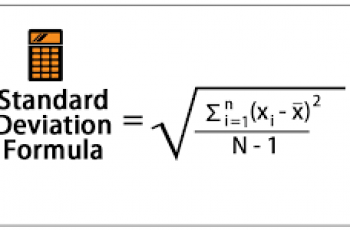The sum of squares measures the deviation of data points away from the mean value.
The sum of squares is also used to calculate other statistical measures, such as variance, standard error, and standard deviation.
Formula to calculate sum of squares.

Y represent the value give
Y bar represent the mean.
Example:
Find the sum of squares of the values given below if their mean is 3.
2, 4, 6, 1, 2.
We’ll begin by finding the variation between each value and the mean.
2 – 3 = -1
4 – 3 = 1
6 – 3 = 3
1 – 3 = -2
2 – 3 = -1
Then square the results.
-1 x -1 = 1
1 x 1 = 1
3 x 3 = 9
-2 x -2 = 4
-1 x -1 = 1
And finally add the squares together.
1 + 1 + 9 + 4 + 1
= 16
Therefore, your sum of squares is 16.

